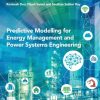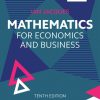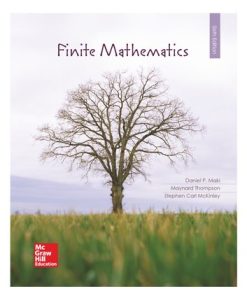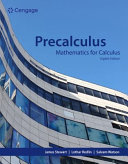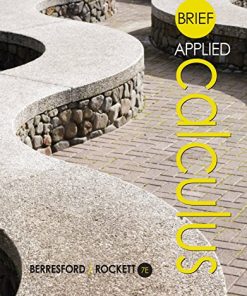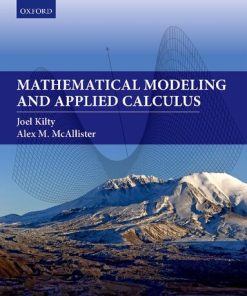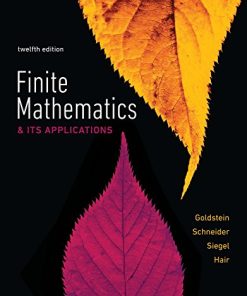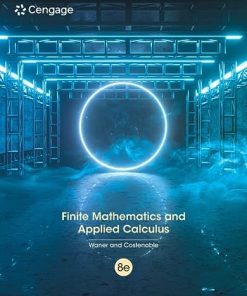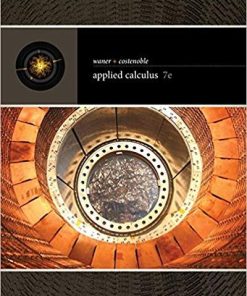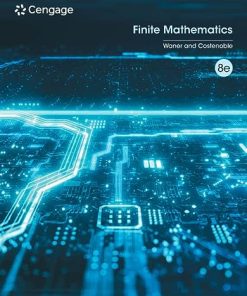(Ebook PDF) Finite Mathematics and Applied Calculus 7th Edition by Stefan Waner 9798214343792 full chapters
$50.00 Original price was: $50.00.$25.00Current price is: $25.00.
Finite Mathematics and Applied Calculus 7th Edition by Stefan Waner – Ebook PDF Instant Download/DeliveryISBN: 9798214343792
Full download Finite Mathematics and Applied Calculus 7th Edition after payment
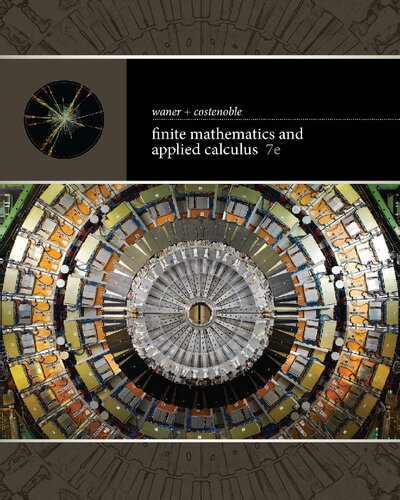
Product details:
ISBN-13 : 9798214343792
Author: Stefan Waner
FINITE MATHEMATICS AND APPLIED CALCULUS, Seventh Edition, uses a large number of applications based on real data from business, economics, and the life and social sciences to help you see how mathematics relates to your own life and interests. Thorough spreadsheet and TI Graphing Calculator instructions appears throughout the text, and optional WebAssign platform include detailed teaching videos by an award-winning instructor. With these tools, plus the authors’ website with online “”game mode”” tutorials and videos on every topic, this text will help you “”get”” mathematics, whatever your learning style may be.
Finite Mathematics and Applied Calculus 7th Table of contents:
0. Precalculus Review
0.1. Real Numbers
Intervals
Operations
Entering Formulas
Accuracy and Rounding
0.1. Exercises
0.2. Exponents and Radicals
Integer Exponents
Radicals
Rational Exponents
Radical Form, Positive Exponent Form, and Power Form
Solving Equations with Exponents
0.2. Exercises
0.3. Multiplying and Factoring Algebraic Expressions
Multiplying Algebraic Expressions
Factoring Algebraic Expressions
0.3. Exercises
0.4. Rational Expressions
0.4. Exercises
0.5. Solving Polynomial Equations
Solution of Linear Equations
Solution of Quadratic Equations
Solution of Cubic Equations
Solution of Higher Order Polynomial Equations
0.5. Exercises
0.6. Solving Miscellaneous Equations
0.6. Exercises
0.7. The Coordinate Plane
The Graph of an Equation
Distance
0.7. Exercises
0.8. Logarithms
Algebraic Properties of Logarithms
Using Logarithms to Solve for Unknowns in the Exponent
0.8. Exercises
1. Functions and Applications
1.1. Functions from the Numerical, Algebraic, and Graphical Viewpoints
Introduction
Functions and Equations
Piecewise-Defined Functions
Vertical Line Test
Common Functions
1.1. Exercises
1.2. Functions and Models
Cost, Revenue, and Profit Models
Demand and Supply Models
Modeling Change Over Time
Algebra of Functions
1.2. Exercises
1.3. Linear Functions and Models
Linear Functions from the Numerical and Graphical Point of View
Finding a Linear Equation from Data
Applications: Linear Models
1.3. Exercises
1.4. Linear Regression
Observed and Predicted Values
Residuals, Sum-of-Squares Error
The Regression Line
Coefficient of Correlation
1.4. Exercises
Key Concepts
Review Exercises
Case Study. Modeling Spending on Mobile Advertising
Technology Guide. TI-83/84 Plus
Technology Guide. Spreadsheet
2. Nonlinear Functions and Models
2.1. Quadratic Functions and Models
Quadratic Functions
Quadratic Functions from the Graphical Point of View: Parabolas
Applications
Fitting a Quadratic Function to Data: Quadratic Regression
2.1. Exercises
2.2. Exponential Functions and Models
Exponential Functions
Exponential Functions from the Numerical and Graphical Points of View
Applications
The Number e and More Applications
Exponential Regression
2.2. Exercises
2.3. Logarithmic Functions and Models
Logarithms and Logarithmic Functions
Applications
Logarithmic Regression
2.3. Exercises
2.4. Logistic Functions and Models
Logistic Functions
Modeling with the Logistic Function
Logistic Regression
2.4. Exercises
Key Concepts
Review Exercises
Case Study. Checking up on Malthus
Technology Guide. TI-83/84 Plus
Technology Guide. Spreadsheet
3. The Mathematics of Finance
3.1. Simple Interest
Calculating Interest
Calculating Future Value
Calculating Present Value
Calculating the Interest Rate
More on Treasury Bills (Optional)
3.1. Exercises
3.2. Compound Interest
Calculating Future Value
Inflation
Nominal and Effective Interest Rates
How Long to Invest
3.2. Exercises
3.3. Annuities, Loans, and Bonds
Annuities
Accumulation: Deposits and Future Value
Annuitization: Withdrawals and Present Value
Amortization: Loans and Mortgages
3.3. Exercises
Key Concepts
Review Exercises
Case Study: Adjustable Rate and Subprime Mortgages
Technology Guide. TI-83/84 Plus
Technology Guide. Spreadsheet
4. Systems of Linear Equations and Matrices
4.1. Systems of Two Equations in Two Unknowns
Linear Equations and Solutions
Solutions to Systems of Linear Equations
Applications
4.1. Exercises
4.2. Using Matrices to Solve Systems of Equations
The Augmented Matrix of a System of Linear Equations
Solving Systems of Equations by Using Row Operations
No Solutions and Infinitely Many Solutions
Overdetermined Systems and Underdetermined Systems
Reduced Row Echelon Form
The Traditional Gauss-Jordan Method (Optional)
4.2. Exercises
4.3. Applications of Systems of Linear Equations
4.3. Exercises
Key Concepts
Review Exercises
Case Study. Hybrid Cars—Optimizing the Degree of Hybridization
Technology Guide. TI-83/84 Plus
Technology Guide. Spreadsheet
5. Matrix Algebra and Applications
5.1. Matrix Addition and Scalar Multiplication
Matrices
Matrix Addition and Subtraction
Scalar Multiplication
Transposition
5.1. Exercises
5.2. Matrix Multiplication
Multiplying Matrices
5.2. Exercises
5.3. Matrix Inversion
Inverse of a Matrix
Finding the Inverse of a Square Matrix
Using the Inverse to Solve a System of n Linear Equations in n Unknowns
5.3. Exercises
5.4. Game Theory
Two-Person Zero-Sum Games
The Payoff Matrix and Expected Payoff
Solving a Game
Strictly Determined Games
5.4. Exercises
5.5. Input-Output Models
Sectors of the Economy
5.5. Exercises
Key Concepts
Review Exercises
Case Study: Projecting Market Share
Technology Guide. TI-83/84 Plus
Technology Guide. Spreadsheet
6. Linear Programming
6.1. Graphing Linear Inequalities
Inequalities
Solving Linear Inequalities in Two Variables
6.1. Exercises
6.2. Solving Linear Programming Problems Graphically
Fundamentals
Applications: Bounded Feasible Regions
Unbounded Feasible Regions
Applications: Unbounded Feasible Regions
6.2. Exercises
6.3. The Simplex Method: Solving Standard Maximization Problems
Standard Maximization Problems and Slack Variables
The Simplex Method
Applications
6.3. Exercises
6.4. The Simplex Method: Solving General Linear Programming Problems
Standard and Nonstandard Linear Programming Problems
Nonstandard Maximization Problems
Minimization Problems
6.4. Exercises
6.5. The Simplex Method and Duality
Dual Linear Programming Problems
Shadow Costs
Application to Game Theory
6.5. Exercises
Key Concepts
Review Exercises
Case Study. The Diet Problem
Technology Guide. TI-83/84 Plus
Spreadsheet. Technology Guide
7. Sets and Counting
7.1. Sets and Set Operations
Sets
Venn Diagrams
Set Operations
Cartesian Product
7.1. Exercises
7.2. Cardinality
The Cardinality of a Union
The Cardinality of a Cartesian Product
7.2. Exercises
7.3. Decision Algorithms: The Addition and Multiplication Principles
The Addition and Multiplication Principles
Decision Algorithms and Decision Trees
7.3. Exercises
7.4. Permutations and Combinations
Permutations
Combinations
7.4. Exercises
Key Concepts
Review Exercises
Case Study: Designing a Puzzle
8. Probability
8.1. Sample Spaces and Events
Sample Spaces
Events
Complement, Union, and Intersection of Events
8.1. Exercises
8.2. Relative Frequency
Fundamentals
Relative Frequency and Increasing Sample Size
8.2. Exercises
8.3. Probability and Probability Models
What Is Probability?
Probability of Unions, Intersections, and Complements
8.3. Exercises
8.4. Probability and Counting Techniques
Counting Techniques Return
8.4. Exercises
8.5. Conditional Probability and Independence
Conditional Probability
Calculating Conditional Probabilities
The Multiplication Principle and Trees
Independence
8.5. Exercises
8.6. Bayes’ Theorem and Applications
Motivating Bayes’ Theorem
Bayes’ Theorem Formula
Expanded Form of Bayes’ Theorem
8.6. Exercises
8.7. Markov Systems
Markov Systems, States, and Transition Probabilities
Distribution Vectors and Powers of the Transition Matrix
Steady-State Distribution Vector
8.7. Exercises
Key Concepts
Review Exercises
Case Study: The Monty Hall Problem
Technology Guide. TI-83/84 Plus
Technology Guide. Spreadsheet
9. Random Variables and Statistics
9.1. Random Variables and Distributions
Random Variables
Probability Distribution of a Finite Random Variable
9.1. Exercises
9.2. Bernoulli Trials and Binomial Random Variables
9.2. Exercises
9.3. Measures of Central Tendency
Mean, Median, and Mode of a Set of Data
Expected Value of a Finite Random Variable
Expected Value of a Binomial Random Variable
Estimating the Expected Value from a Sample
9.3. Exercises
9.4. Measures of Dispersion
Variance and Standard Deviation of a Set of Scores
Variance and Standard Deviation of a Finite Random Variable
Variance and Standard Deviation of a Binomial Random Variable
9.4. Exercises
9.5. Normal Distributions
Continuous Random Variables
Normal Density Functions
Calculating Probabilities for the Standard Normal Distribution
Calculating Probabilities for Any Normal Distribution
Normal Approximation to a Binomial Distribution
9.5. Exercises
Key Concepts
Review Exercises
Case Study. Spotting Tax Fraud with Benford’s Law
Technology Guide. TI-83/84
Technology Guide. Spreadsheet
10. Introduction to the Derivative
10.1. Limits: Numerical and Graphical Viewpoints
Evaluating Limits Numerically
Limits at Infinity
Estimating Limits Graphically
Application
10.1. Exercises
10.2. Limits and Continuity
Continuous Functions
Singularities
10.2. Exercises
10.3. Limits and Continuity: Algebraic Viewpoint
Closed-Form Functions
Functions Not in Closed Form
Limits at Infinity
Some Determinate and Indeterminate Forms
10.3. Exercises
10.4. Average Rate of Change
Change and Average Rate of Change
Formulas for Change and Average Rate of Change
Average Rate of Change of a Function Specified Algebraically
10.4. Exercises
10.5. The Derivative: Numerical and Graphical Viewpoints
Instantaneous Rate of Change of a Function
Secant and Tangent Lines
Quick Approximation of the Derivative
Leibniz d Notation
The Derivative Function
10.5. Exercises
10.6. The Derivative: Algebraic Viewpoint
Calculating the Derivative Algebraically
A Function Not Differentiable at a Point
10.6. Exercises
Key Concepts
Review Exercises
Case Study: Reducing Sulfur Emissions
Technology Guide. TI-83/84 Plus
Technology Guide. Spreadsheet
11. Techniques of Differentiation with Applications
11.1. Derivatives of Powers, Sums, and Constant Multiples
Shortcut Rules
The Power Rule
Another Notation: Differential Notation
The Rules for Sums and Constant Multiples
Applications
An Application to Limits: L’Hospital’s Rule
11.1. Exercises
11.2. A First Application: Marginal Analysis
Marginal Cost, Revenue, and Profit
Average Cost
11.2. Exercises
11.3. The Product and Quotient Rules
Motivating the Product Rule
Product and Quotient Rules
Application
11.3. Exercises
11.4. The Chain Rule
Introducing the Chain Rule
Application
11.4. Exercises
11.5. Derivatives of Logarithmic and Exponential Functions
Derivative of ln x and log b x
Derivatives of Logarithms of Functions
Derivatives of Exponential Functions
Derivatives of Exponentials of Functions
Applications
Application to Limits
11.5. Exercises
11.6. Implicit Differentiation
Implicit Functions
Implicit Differentiation
Logarithmic Differentiation
Application
11.6. Exercises
Key Concepts
Review Exercises
Case Study. Projecting Market Growth
12. Further Applications of the Derivatives
12.1. Maxima and Minima
Relative Extrema
Absolute Extrema
Locating Extrema
First Derivative Test
12.1. Exercises
12.2. Applications of Maxima and Minima
12.2. Exercises
12.3. Higher Order Derivatives: Acceleration and Concavity
The Second Derivative and Acceleration
Differential Notation for the Second Derivative
Geometric Interpretation of Second Derivative: Concavity
The Second Derivative Test for Relative Extrema
Higher Order Derivatives
12.3. Exercises
12.4. Analyzing Graphs
12.4. Exercises
12.5. Related Rates
12.5. Exercises
12.6. Elasticity
Price Elasticity of Demand
Income Elasticity of Demand
12.6. Exercises
Key Concepts
Review Exercises
Case Study: Production Lot Size Management
Technology Guide. TI-83/84 Plus
Technology Guide. Spreadsheet
13. The Integral
13.1. The Indefinite Integral
Antiderivatives and the Indefinite Integral
Calculating Indefinite Integrals
Applications
Motion in a Straight Line
13.1. Exercises
13.2. Substitution
The Technique of Substitution
Application
Shortcuts
13.2. Exercises
13.3. The Definite Integral: Numerical and Graphical Viewpoints
Riemann Sums
Calculating Riemann Sums
The Definite Integral
Calculating Definite Integrals
13.3. Exercises
13.4. The Definite Integral: Algebraic Viewpoint and the Fundamental Theorem of Calculus
Connection between Definite and Indefinite Integrals
Statement of the Fundamental Theorem of Calculus
Applications
13.4. Exercises
Key Concepts
Review Exercises
Case Study: Spending on Housing Construction
Technology Guide. TI-83/84 Plus
Technology Guide. Spreadsheet
14. Further Integration Techniques and Applications of the Integral
14.1. Integration by Parts
Integration-by-Parts Formula
The Tabular Method
14.1. Exercises
14.2. Area between Two Curves and Applications
14.2. Exercises
14.3. Averages and Moving Averages
Averages
Interpreting the Average of a Function Geometrically
14.3. Exercises
14.4. Applications to Business and Economics: Consumers’ and Producers’ Surplus and Continuous Income Streams
Consumers’ Surplus
Consumers’ Willingness to Spend
Consumers’ Expenditure
Producers’ Surplus
Continuous Income Streams
14.4. Exercises
14.5. Improper Integrals and Applications
Integrals in Which a Limit of Integration Is Infinite
Integrals in Which the Integrand Becomes Infinite
14.5. Exercises
14.6. Differential Equations and Applications
Differential Equations and Their Solutions
Simple Differential Equations
Separable Differential Equations
14.6. Exercises
Key Concepts
Review Exercises
Case Study. Estimating Tax Revenues
Technology Guide. TI-83/84 Plus
Technology Guide. Spreadsheet
15. Functions of Several Variables
15.1. Functions of Several Variables from the Numerical, Algebraic, and Graphical Viewpoints
Numerical and Algebraic Viewpoints
Geometric Viewpoint: Three-Dimensional Space and the Graph of a Function of Two Variables
15.1. Exercises
15.2. Partial Derivatives
Calculating and Interpreting Partial Derivatives
Geometric Interpretation of Partial Derivatives
Second-Order Partial Derivatives
15.2. Exercises
15.3. Maxima and Minima
Relative and Absolute Maxima and Minima
Second Derivative Test
Application: Deriving the Formulas for Linear Regression
15.3. Exercises
15.4. Constrained Maxima and Minima and Applications
Substitution Method
The Method of Lagrange Multipliers
Applications
15.4. Exercises
15.5. Double Integrals and Applications
Applications
15.5. Exercises
Key Concepts
Review Exercises
Case Study: Modeling College Population
Technology Guide. TI-83/84 Plus
Technology Guide. Spreadsheet
16. Trigonometric Models
16.1. Trigonometric Functions, Models, and Regression
The Sine Function
The Cosine Function
The Other Trigonometric Functions
Trigonometric Regression
16.1. Exercises
16.2. Derivatives of Trigonometric Functions and Applications
Derivatives of Sine and Cosine
Derivation of Formulas for Derivatives of the Sine and Cosine Functions
Derivatives of Other Trigonometric Functions
16.2. Exercises
16.3. Integrals of Trigonometric Functions and Applications
Integrals of Sine and Cosine
Integrals of the Six Trigonometric Functions
Derivations of Formulas for Integrals of Trigonometic Functions
Shortcuts
Using Integration by Parts with Trigonometric Functions
16.3. Exercises
People also search for Finite Mathematics and Applied Calculus 7th:
borrow finite mathematics and applied calculus
finite mathematics and applied calculus 8th edition pdf
finite mathematics and applied calculus 7th edition pdf
finite mathematics and applied calculus answers
finite mathematics and applied calculus pdf
Tags:
Finite Mathematics,Applied Calculus,Stefan Waner
You may also like…
Mathematics
Mathematics - Algebra
Mathematics
Science (General)
Mathematical Modeling and Applied Calculus 1st Edition Joel Kilty
Mathematics - Discrete Mathematics
Mathematics - Discrete Mathematics


